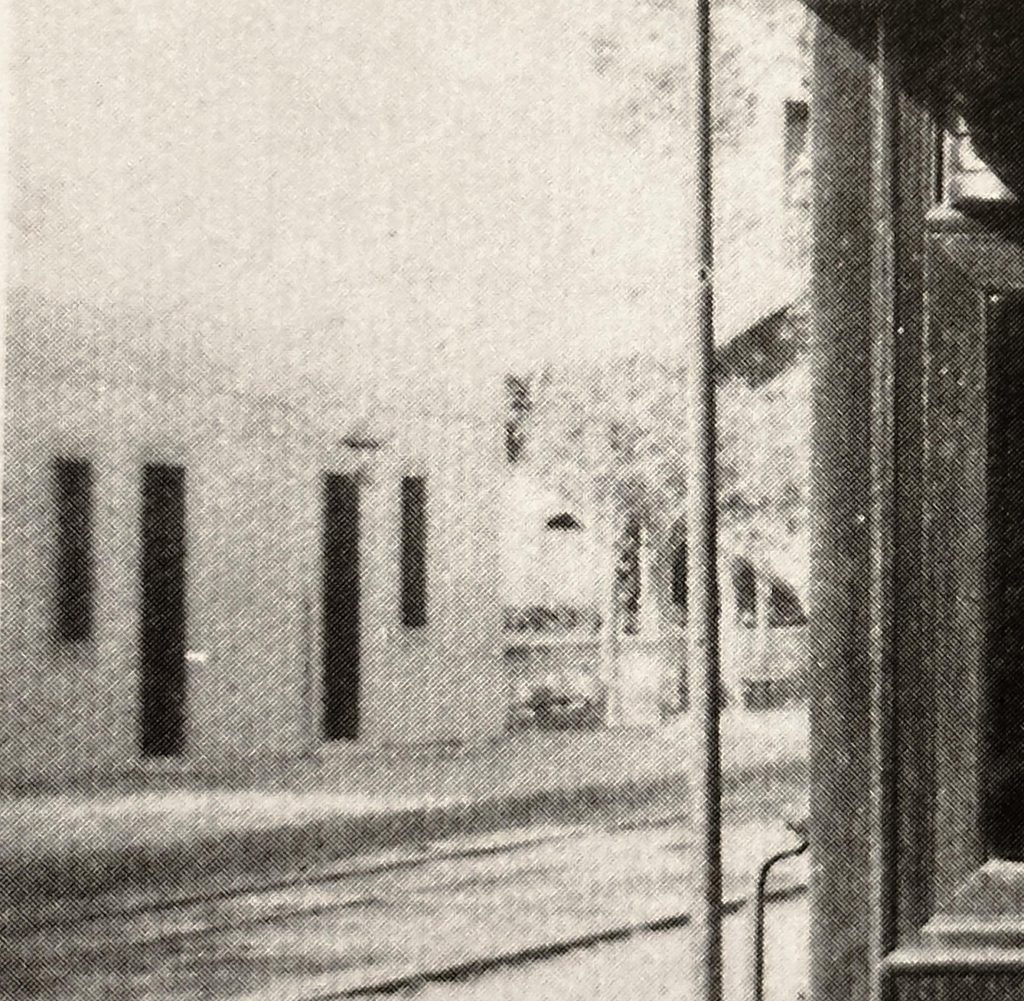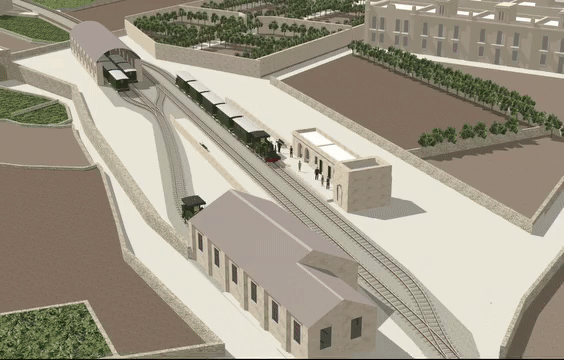One wonders how the original Malta Railway company managed to operate with such basic facilities at its main depot. The engine shed wasn’t large enough for all four of its engines, and the larger carriage shed couldn’t accommodate all of the 30 carriages. The original building was tiny, built to a similar design to those at Notabile and Birkirkara with a pair of arches off the platform providing basic shelter and a ticket office. Hamrun’s appears as a background detail in a sole photo of the Governor’s carriage. Like Birkirkara, the station at Hamrun was dwarfed by the water tower beside it.
The platforms were painfully short, barely long enough for a train of six carriages. There was no shelter from the sun or inclement weather until lines of trees were planted by the Government almost as soon as they took over the line.
Hamrun station wasn’t overlooked in the substantial programme of rebuilding begun after the Government took control of the Railway in 1890. A new entrance and booking office was added at about the same time as the takeover and the first blocks of the engineering works would have followed. The old station building survived longer, being included in proposals to further expand the engineering works and carriage storage in 1897.
These two models show the change between the original exposed and barren site and the station we’re more familiar with. In the background, the farm fields and former gardens of Blacas Palace give a rural character to the setting before being subsumed in the Victorian expansion of Hamrun. Blacas Buildings was completed in the same year the railway opened. A government project to provide model workers housing, was this a deliberate accompaniment to the station and the conscious development of Hamrun as a Railway Town?



No responses yet